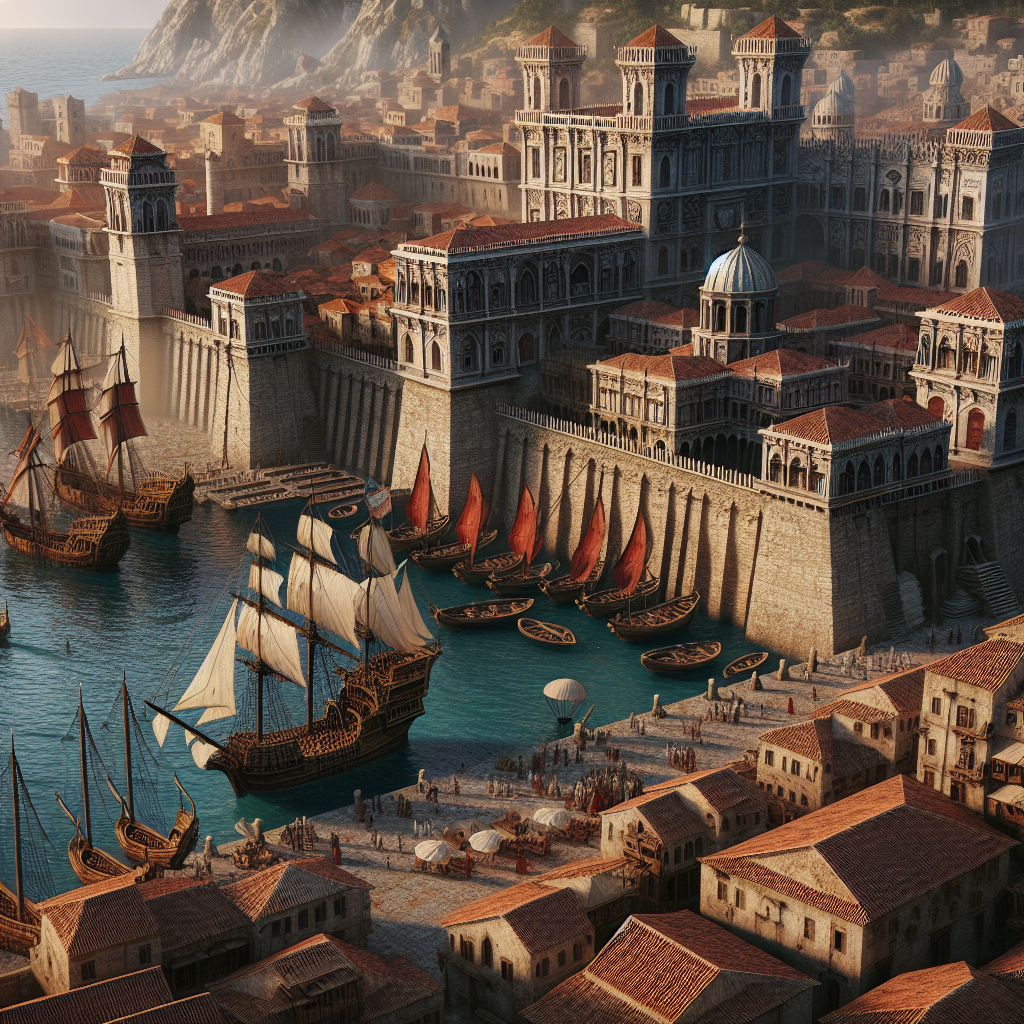Imagine a world that smells of fresh pizza, stunning silk, and salty sea waves. Well, welcome to the world of Genoa, a bustling maritime republic that stretched its influence way beyond its Italian borders. The Genoese, with their knack for seafaring and trade, carved their own set of colonies and trading posts across the Mediterranean and the Black Sea between the 11th and 15th centuries. You might wonder why they ventured far and wide; well, it wasn’t purely out of wanderlust. They were chasing trade opportunities, building economic dominance, and, to some, it was perhaps an escape from the political restrictions back home.
Let's talk about who these pioneers were. Genoa, once a modest fishing village, quickly transformed into one of the most powerful city-states of Italy. With their strategic location on the Ligurian Sea, the Genoese found sea routes as natural veins for their mercantile blood to flow. Their commercial empire rested on maritime navigation and financial ventures that expanded far and wide. From the island of Corsica and Sardinia to places like Crimea and Constantinople, the Genoese blueprint was stamped across southern Europe and beyond. But this expansion wasn't without controversy or opposition. Much like today’s big corporations, they faced rivals in Venice and hostile local populations who didn’t always welcome foreign control.
The 'what' of the Genoese colonies isn’t just about geographical expansion; it reflects a cultural mingling and clash that left an indelible mark on history. Imagine the influx of goods, fashion, artwork that traveled back and forth, the exchange of ideas, and the diffusion of technology. While for Genoa, the colonies served as hubs of wealth creation, they were also places where the local populace often had to navigate the exploitative structures of foreign dominance. Modern readers might sniff a touch of colonial exploitation reminiscent of later European empires. But in the context of medieval self-governance, the Genoese would argue they spread civilization while leveraging local resources.
But how did all this happen? First, let's not underestimate the power of a well-built navy. The Genoese fleet was as formidable as any modern-day enterprise. It wasn’t just ships of wood but foundations of power that helped them lay claim to foreign shores. They didn’t only invest in commerce and warships but also in diplomacy, marrying their daughters into local ruling families, and making mercantile alliances. The Genoese were innovative, paving the way in banking and ledgers practices, pioneering financial techniques long before Wall Street became the nerve center of the world economy. They introduced written checks and public debt mechanisms, allowing them to fund expeditions with better coordination.
Speaking of where, the Genoese expanse is fascinating. Their colonies reached into the heart of the Black Sea, placing them at the doorstep of Asia, where they intercepted the Silk Road. Kaffa in Crimea was a key asset, both in trade and as a staging ground, which might even hold a murky link to the spread of the plague into Europe. It was here that the Mongols besieged the city and catapulted, quite literally, disease-ridden bodies over the city walls, a medieval form of biological warfare linked to the spread of the Black Death.
When we ask why Genoa was so driven to outpost creation, one word sums it up: survival. In a period of political fragility and fierce commercial rivalry, colonial expansion was a strategy for survival and growth. To secure supply lines, ensure a steady flow of luxury goods, and exert influence over less controlled trade routes, the Genoese saw colonies as essential. Yet, as history has often shown, the weight of such an empire-building was burdensome. Eventually, as the tides turned and new powers like the Ottomans emerged, many of these colonies became outposts of a fading era.
Understanding this slice of history allows us to perceive the medieval Genoese colonies as more than just outposts of trade. They were complex ecosystems where cultural exchange was both unifying and divisive. While some might harbor a romantic image of European empires spreading enlightenment, others would argue that they exacerbated economic disparity and cultural dominance. Much like any cultural touchstone today, there's room for differing opinions. The Genoese colonies are a chapter of history that, despite its far-reaching vistas, nudges us to reflect on power, cultural integration, and the flow of ideas.
Looking back, these colonies remind us of the complexity of history where trade, politics, and cultural evolution are intertwined. There’s a lot we can learn from the choices made by Genoa to understand a period not so different from ours, where we are grappling with globalization, cultural mingling, and the challenges of economic power. This nuanced tapestry is what makes examining Genoese colonies fascinating and perhaps, surprisingly relatable.

